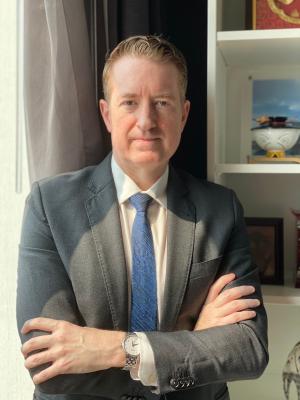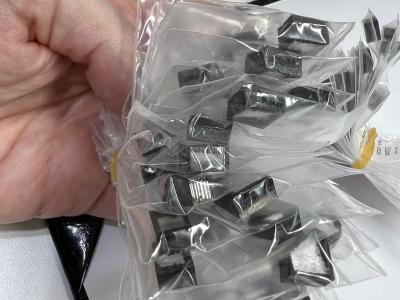UK-based PlanarTECH offers R&D and production-scale equipment and services for all classes of emerging 2D materials and carbon-based materials such as CNTs and CVD diamonds. In 2020 planarTECH launched a successful equity crowdfunding campaign as it aims to expand its business and enter new markets such as industrial CVD graphene production systems and material production.
We have recently talked to the company's CEO, J. Patrick Frantz, who gives us the latest business and technology updates from PlanarTECH.
Q: Can you update us on your latest business activities, with a focus on graphene?
We had a very difficult time during the pandemic, as many companies did. From July 2020 through June 2021 we shipped just one CVD system. However, we started to see a resumption of customer activity towards the end of 2021 as labs reopened and people around the world got back to work. For 2022, we’re seeing a complete recovery and are on our way to the best year we’ve ever had in terms of sales.
With respect to graphene, we’re not seeing much activity in this space from our academic customer base. Apart from the BRIC countries, most of the academics have moved on to work on h-BN, TMDs and other 2D materials, and we’ve followed them into these markets. This indicates to us what researchers are focused now, which appears to be semiconductor application, such as quantum computing.
However, where we are seeing graphene activity is on the industrial side with continued interest in production systems for both graphene and CNTs. We expect to see this continue as the processes for material growth mature and new applications emerge.
Q: Can you detail the graphene CVD systems you have on offer?
Pretty much everything we do is customized to the customers’ needs, and this is really our market advantage and what sets us apart from other companies. While we do have a base platform we work from, practically zero customers go with the default configuration.
Our products can range from very simple low-cost benchtop designs to more elaborate roll-to-roll systems. We’re currently building a roll-to-roll system for a customer in the US and we have strong interest in this from European customers, as well.
We also see strong interest in our multichamber systems that can handle multiple materials or systems that combine CVD with some other kind of system (like a thermal evaporator, RIE or sputter tool).
Q: Can you share some of your academic customers, and what these systems are used for?
There is really a wide range of things that our customers are working on these days. Now that we’ve shipped over 75 systems, it’s a bit difficult to track everything that each customer is doing, though we try. Some customers, such as Prof. Eric Pop at Stanford, are doing excellent work at combining the different 2D materials into heterostructure devices.
One of the more exciting things we’ve seen work on involves fabrication of memristors from 2D materials for artificial intelligence. IMRE in Singapore and Prof. Mario Lanza at KAUST in Saudi Arabia are doing good work in this space.
Q: Is planarTECH also seeing demand for industrial CVD systems, not just R&D ones?
Yes, as noted earlier, we’ve seen much stronger industrial interest in 2021/2022 and this will be a focus for 2023 as it moves planarTECH into a new markets beyond the supply of bespoke systems for academic R&D.
Q: Can We understand that planarTECH is seeing higher demand for CVD machines, from several industries. How are you seeing the current business environment?
Indeed, the bulk of interest recently has come from companies in the CNT market. We believe this is driven by recent wider adoption of CNTs in the battery sector. Most CNT companies we know (e.g. in Korea and China) are now expanding production to meet demand. All of this activity has led to renewed interest in the market by venture capitalists. We’ve been approached by 3-4 startups in this space and have established a very deep relationship with one of them by providing a series of both R&D and pilot production systems.
There is also interest from graphene companies and we have a good relationship with one application-oriented company in this space. They are also looking for a roll-to-roll system for their own in-house production of graphene-based devices. This is an market opportunity that the organic based graphene producers cannot realistically address, and CVD production has had issues on scalability – industry is now looking seriously at this given the large scale opportunities.
Q: How do you see the current market for CVD graphene materials?
We’ve started seeing a few compelling use cases – applications where graphene is truly offering a unique solution and is not just a replacement for something, like ITO. That said, we think (as is the case with GNPs) that it will be very difficult for companies to make money just by selling material. The applications will be where the money is at, and we think that most companies offering some kind of solution based on CVD graphene will ultimately move production in house to better control costs, QC and environmental factors.
Q: A new market for planarTECH Is CVD diamonds, can you bring us up to date on that?
Yes, historically we’ve had a steady stream of inquiries for systems to produce CVD “lab grown” diamond, so we finally decided to explore that by establishing a partnership with a company in Taiwan. On the one hand, making CD diamond very similar to graphene, but on the other hand it requires more complicated and enhanced equipment. We’ve already made our first sale and shipped a system for R&D to Khalifa University in the UAE.
Overall, this is a very interesting market because there is growing demand for “lab-grown” diamonds vs. naturally mined diamonds, and that is a sector we can address and can be quite profitable. We’re engaged in conversations with multiple jewelry makers about helping them to setup production.
However, what we are really interested in here is the long-term market of use of CVD diamond in semiconductor devices. We think it’s potentially more exciting than graphene due to applications such as quantum computing, and to address this we’ll need to design an even higher-performance CVD system than those currently available on the market. We have the skill sets in house and access to a world leader on CVD diamond process; all we need is working capital.
Q: A couple of years ago planarTECH also entered other markets - graphene-based devices and graphene materials. Can you update us on that part of the business?
We launched that graphene mask in 2020 as the pandemic was unfolding, and we did reasonably well with that. I would have to be honest and say that that product helped us survive that difficult time.
While we are still keeping our eyes open for other interesting applications (and have a few product plans developed) we’ve been 100% focused in 2022 on getting the systems business back on the right track. And so far we have accomplished that. We may get back to some applications work in 2023.
Q: In 2020 planarTECH concluded a successful equity crowdfunding campaign, what can you share with our readers in 2 years perspective.
Well, first, I would like to thank all of the shareholders who participated in that campaign. If we had not raised money at the beginning of the pandemic, we likely would not have survived until today. Regrettably, we’ve had to resort to some costly bridge financing, and this is something we’d like to replace with a more appropriate funding source in the near future.
Second, I am happy to report that we did accomplish our stated goals in the campaign. The main goal was to shift the CVD system business towards a more industrial customer base. While I cannot disclose many details about our industrial partner, we do have a good relationship with one company in the US. We’ve delivered three systems so far to them with a fourth production system being built now. So I can confidently say that we’ve delivered on that promise.
Q: We hear you are planning a second crowdfunding campaign, do you have any more details?
Yes, we are actively considering a second campaign on Seedrs. Currently, we’ve identified two investment needs: 1) a short-term need to manage day-to-day working capital cash-flow that constantly needs funds for materials; and 2) a long-term need to achieve our objective of growing from a $1-2 million revenue company to a $10-20 million company.
With limited cash resources we have not capitalized on our database of over 600 opportunities at universities, research institutes and corporate R&D. And with such limited resources we are focused on delivering systems. The flow of new inquiries continues to be encouraging and could be increased with a dedicated team. The service and maintenance opportunities alone are a good potential source of revenue but it requires regular sales visits to the universities/academics.
Our campaign will address the first objective and we hope to launch it in early 2023.
Thank you Patrick! I wish you the best of luck!


